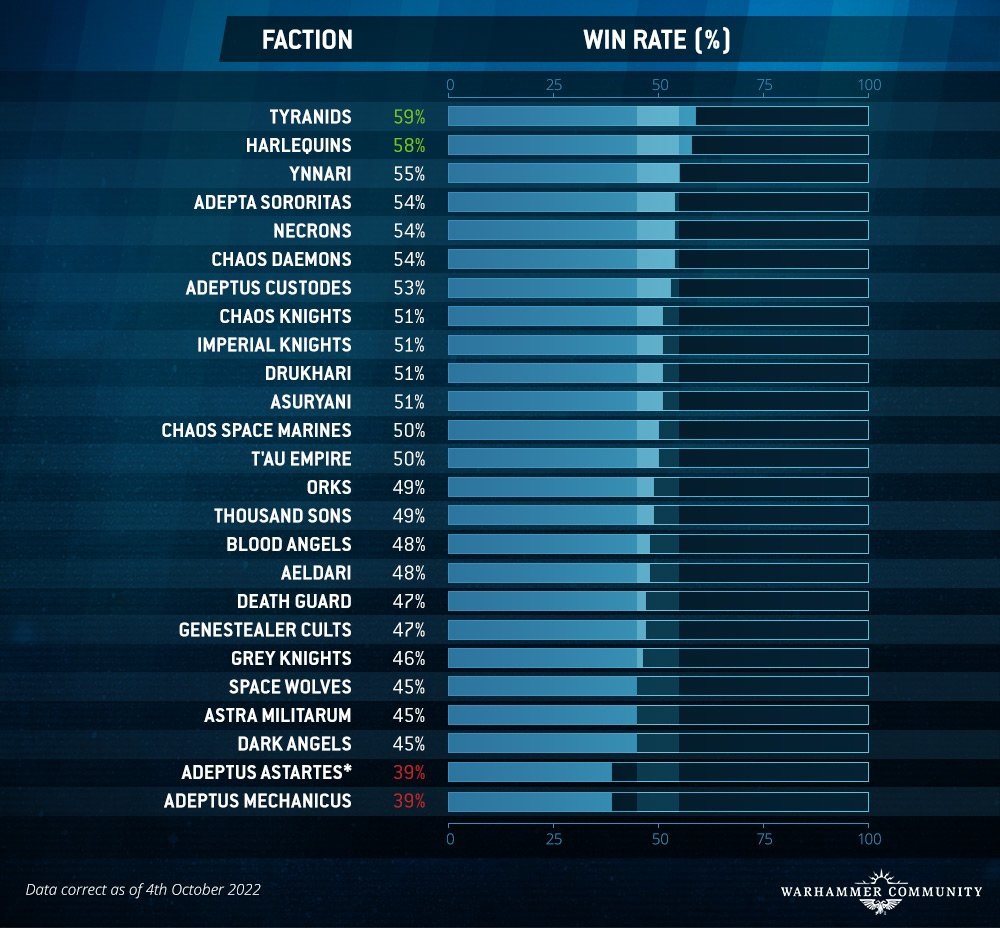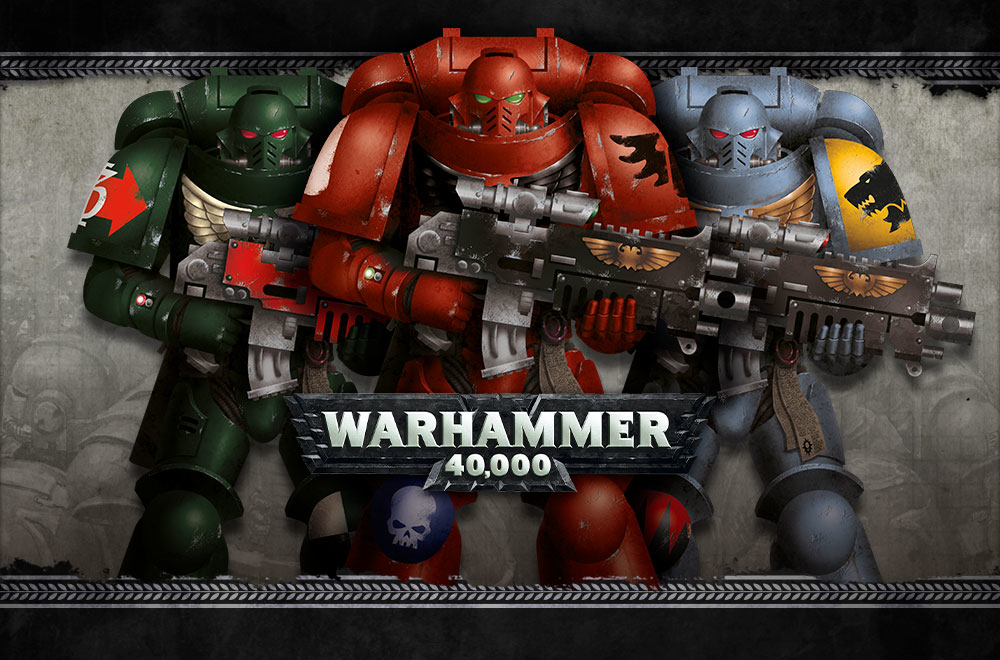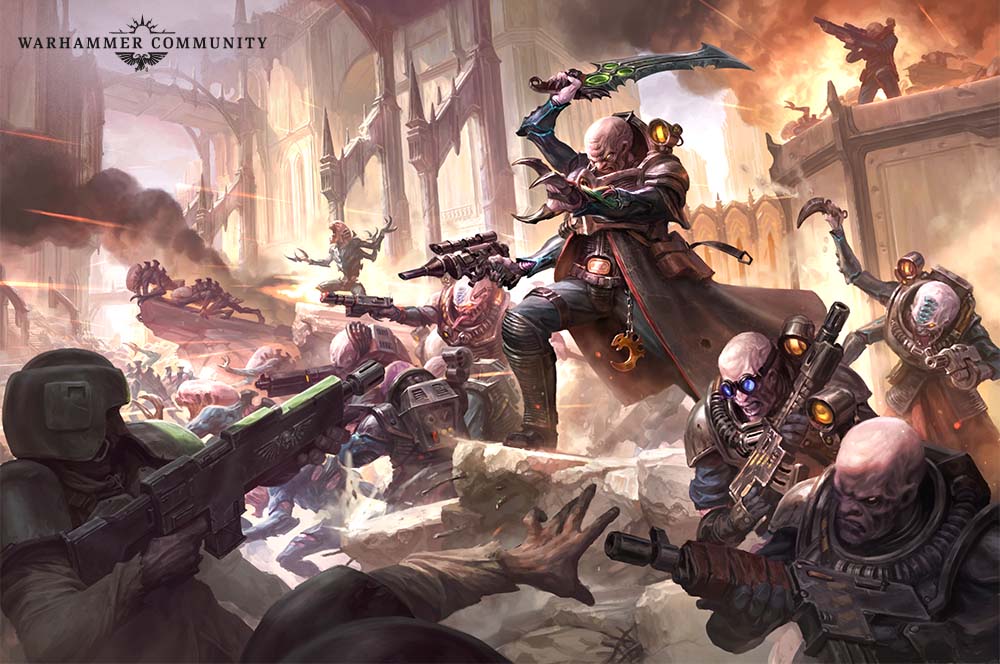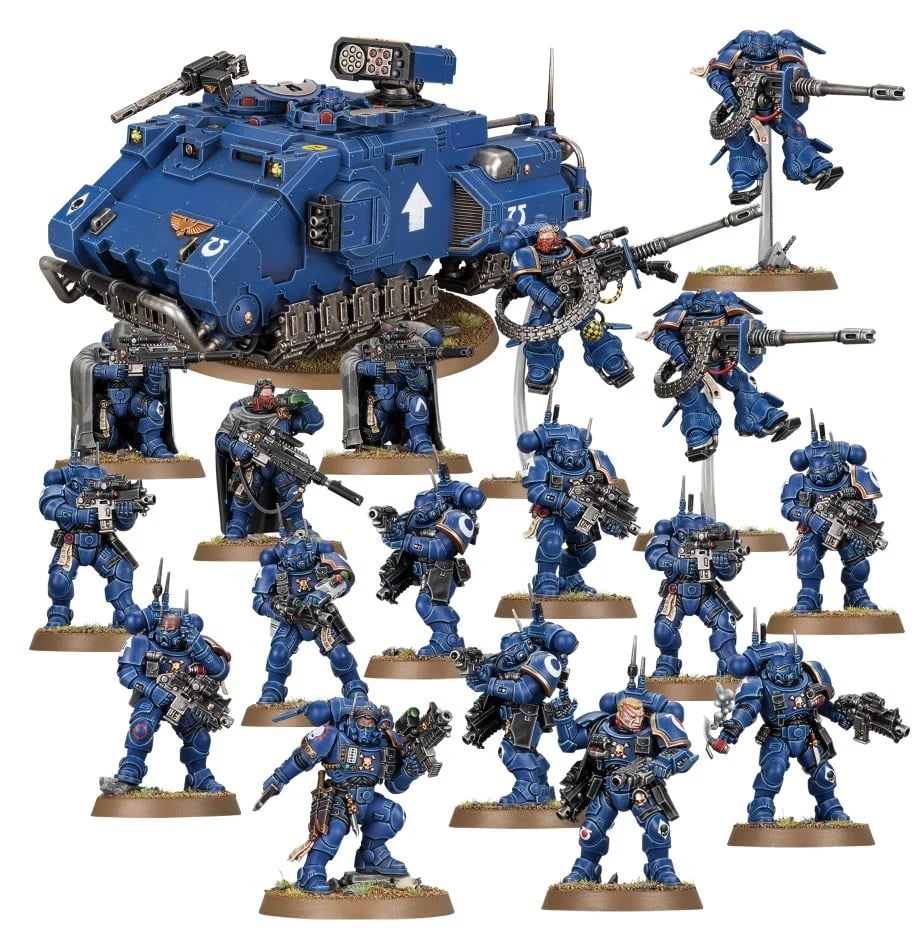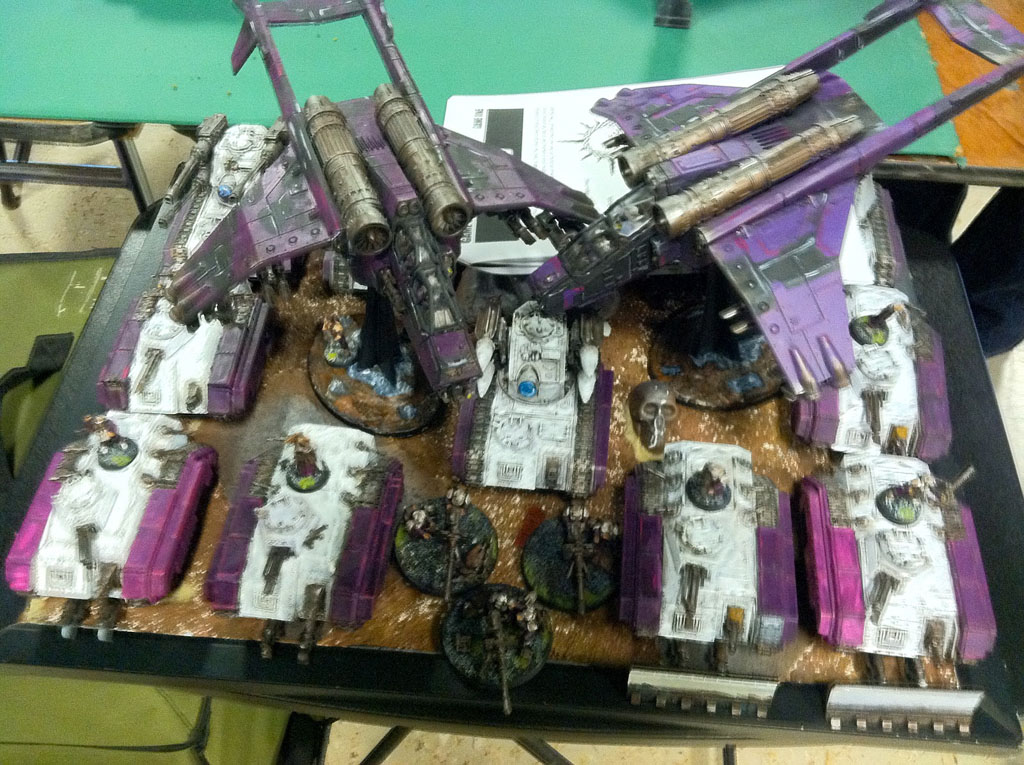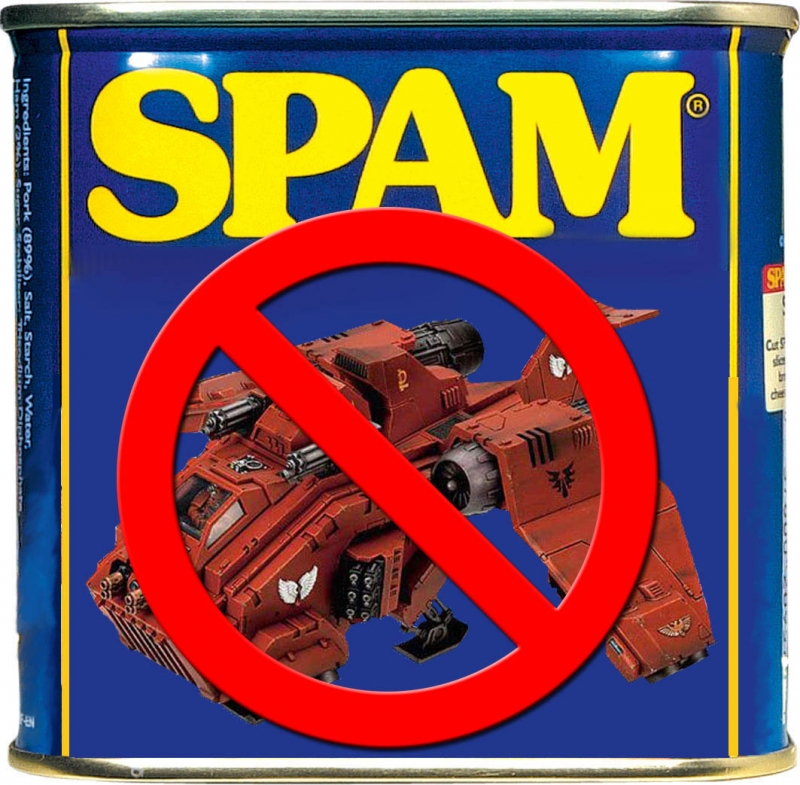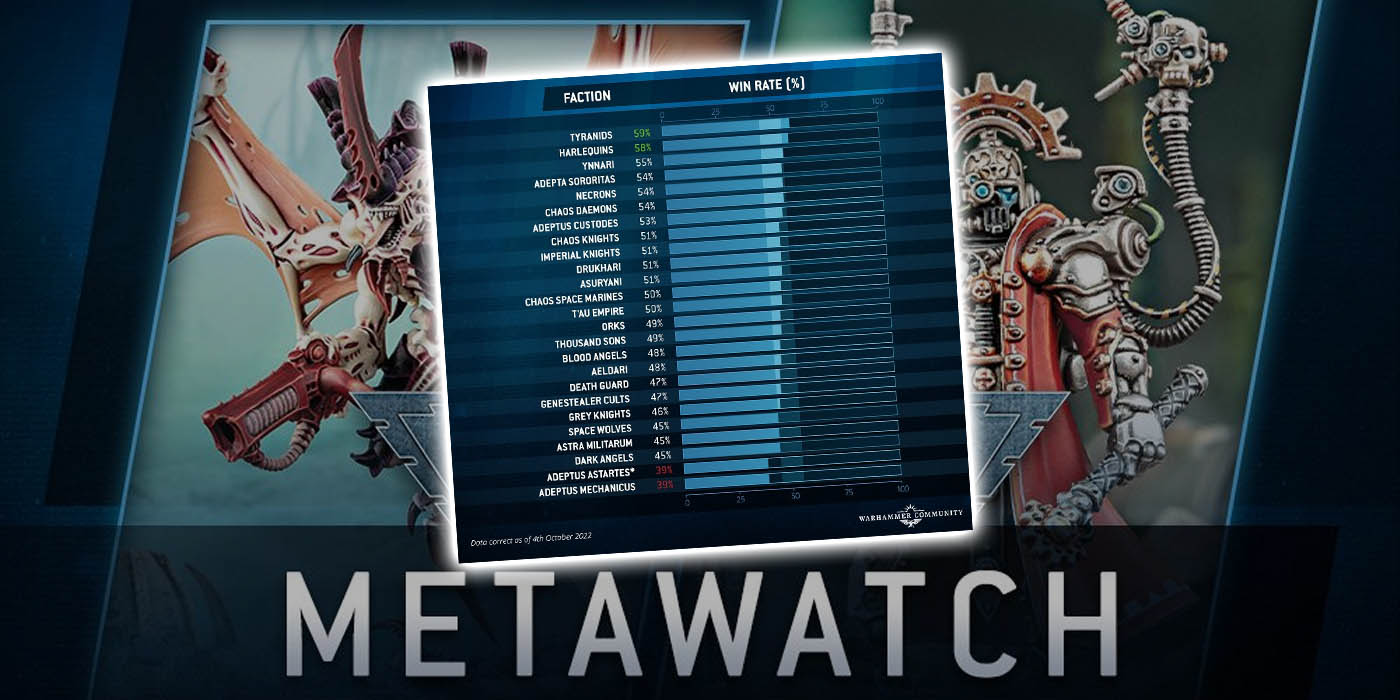Warhammer 40K: Let’s Talk About That Metawatch
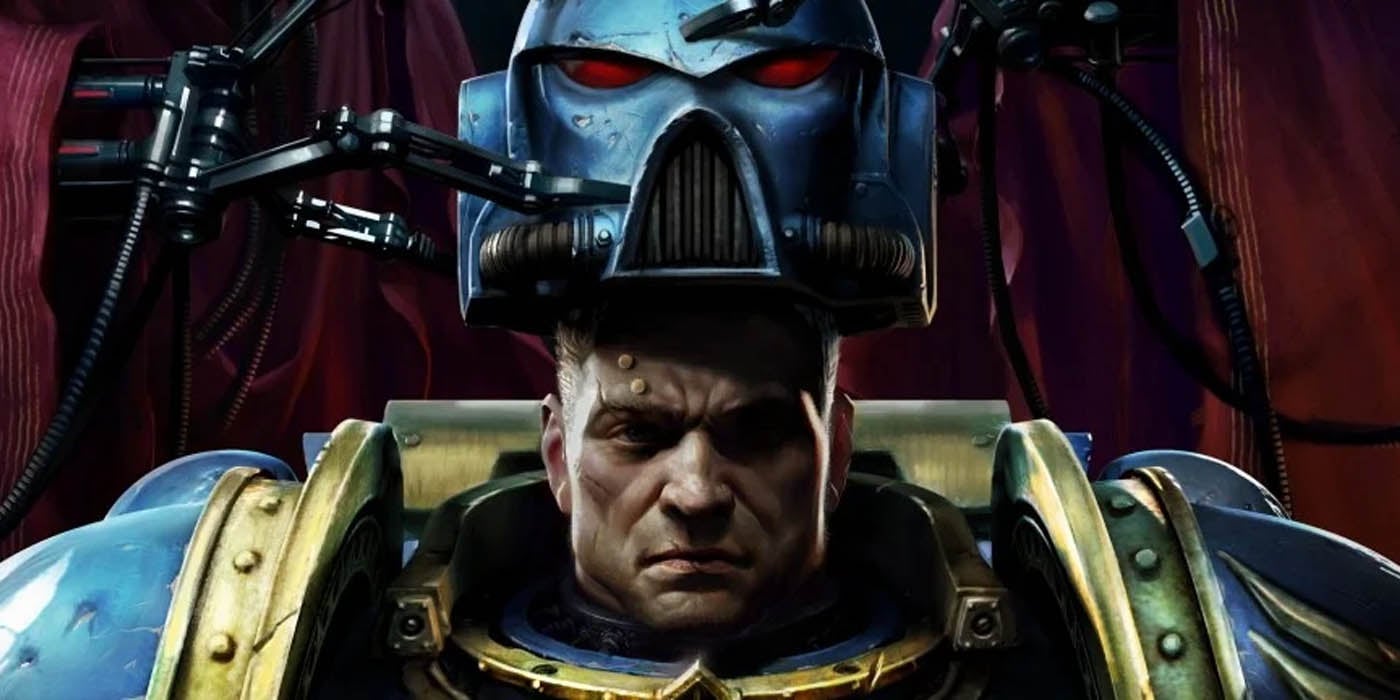

Games Workshop gave us a look at their Balance Philosophy and how they use the win rate data. But does it go far enough?
Yesterday, we covered the Metawatch and how GW uses win rates to help them guide their balance changes. We also got a look at their Balance Philosophy as well. I personally appreciate their Balance Philosophy in that “A balanced game is good for everyone” and “each army should be the best at doing the thing it’s meant to be best at” — I think both those things are good goals to drive towards.
However, there’s still the question of how granular to get with the actual data and if win rate is the best indicator of that.
Is Win Rate Data Enough?
Commenter Zeeb brought up a really good point in the comment section on the last one and I want to highlight it and go into more detail:
First up, thanks for the thoughtful comment Zeeb. I agree with many of the issues you brought up here. Let’s talk about the first point about win rate and balance.
“I really hope they don’t take a 50% win rate to mean the army is balanced.”
It’s funny, Abe and I were poking at this as a side discussion in relation to the article as well. I happen to agree — just because an army has a 50% win rate doesn’t mean it’s balanced. There are way more factors involved and way more variables to consider than just win rate. In the previous discussion I even said “It’s important to know that the win rate is the cornerstone for GW’s balancing attempts.” But that doesn’t mean it should be the only consideration for balance attempts.
Let’s take those Adeptus Astartes as an example with their 39% win rate. Honestly, just based on the data, you’d think be forgiven for thinking “wow, that army is bad and needs some help! BUFF MARINES!” Wait, what?! And I think even Games Workshop knows that number isn’t telling the whole story. They even identified some of the core issues with Adeptus Astartes in their article:
“You’ll see that Adeptus Astartes armies (those made using Codex: Space Marines) fall into the underperforming category, with a win rate of just 39%. Space Marine armies are incredibly prevalent, as the iconic armoured face of the 41st Millennium. They’re often new players’ first army – and it’s fair to say that most people aren’t especially gifted at the noble art of Warhammer 40,000 when they first start playing. It also means most players are quite familiar with them – and how to play against them. This is part of why their results don’t quite match their indomitable reputation. “
There’s a myriad of reasons why Marines aren’t at a 50% win rate — and most of those factors aren’t because the army is poorly designed. It’s actually one of the most over designed armies in the game with literally THE MOST options of units out of any other army. Not to mention all the various Chapters that can be used under the umbrella of Adeptus Astartes. Even the data itself is muddled — that number also includes stats for Chapters like Iron Hands, Salamanders, and even Deathwatch. It’s not exactly “clean” data on Adeptus Astartes.
Gatekeeper Armies
Win rate doesn’t tell the whole picture. There’s not enough granularity in the win rate data to make definite changes. However, it can be used as an indicator that “hey, these outliers are …outliers” and they should probably get some attention. But if you’re doing that you’re just playing “whack-a-mole” on the outliers and not looking at some of those armies that are in the middle. Which brings us to Zeeb’s next point:
“There is a ton of variance between a mid tier gate keeper army and one that played perfectly can win an event (GSC), but otherwise just gets stepped on. They hopefully will make granular changes to most armies.”
No lies detected. There are, in fact, many of those “mid tier gate keeper” armies in the game. They are the types of armies that go to a 2 day event and get a 3-0 sweep the first day but end up going 0-2 the next day. Or you’ll see them at the local 3 round tourney and they’ll go 2-1 as they can never quite cinch the final victory. These are the types of armies that, when played by a real master of that army, will actually win an event. But when played by an inexperienced player or if they have just one bad round when things don’t go to plan can fall apart quite quickly.
Part of the GSC Plan: Roll 6’s. If you stick to the plan, things go a whole lot smoother.
Win rate doesn’t account for player experience with their army. It also doesn’t account for player experience against that army. Again, using the Adeptus Astartes as an example, people know how to play and play against that army. It’s actually THE Gatekeeper army. If you go to an event without an idea of how to deal with Marines you’re going to have a tough time. Which is also why they have 39% win rate — people PLAN to play at least a game against them and have an answer for them. If you can’t beat the Gatekeeper then you’re not advancing. If you’re playing a Gatekeeper Army then prepare for prepared opponents.
Granularity Within Armies And Army Lists
Zeeb’s final point here is another valid observation about the armies and units within those armies:
“The AOS version of that article mentioned paying attention to the frequency that units were showing up in competitive lists. Some units are way over represented while others sit on the shelves. Tau is currently using two Sunsharks in most lists while awesome models like the Ghostkeel or Stealth Suits don’t see play.”
This is yet another factor that win rate can’t tell you. Again, going back to the Marines, how many different ways are there to build a Space Marine army? We’re already starting with a unit pool that’s two or three times the size of other factions. It’s basically 3 armies in one book — and that’s before you start adding in the various Chapter options. The sheer amount of variance between Space Marines armies is staggering…or it should be, right?
If a particular army is doing well, it’s helpful to look at the list that are actually snagging those wins. If you start to notice that each list starts to look the same or a specific combination of units/options are chosen consistently then that’s a sign that something is off. Units that are “way over represented” in armies are a sign that a “Dominant Strategy” has been discovered and the player base is attempting to exploit it for victory.
Hi, I’m the Leafblower. You might have heard of me…
Now, I’m not going to get into all the Game Theory behind this stuff. But it’s a thing that purely looking at win rate alone can’t tell you. I can tell you that the 40k community is quick to jump on these Dominant Strategies when it comes to competitive play. There’s a whole graveyard full of armies from the past that became the bandwagon army for a hot minute before GW put out an FAQ or change that nerfed that army into the ground.
Is it possible for Games Workshop to get more granular on within each army? Yes. But I don’t want to be the person sorting through all that data. Unless it’s blatantly obvious it can take time for GW to adjust an army’s internal balance. And unless that army is at the top of the heap GW probably isn’t going to move super quick to change them either.
Game Balance is a tricky thing. Analyzing win rate is just one tool to help — but don’t think that just because an army is at 50% win rate that it’s completely fine and balanced.


